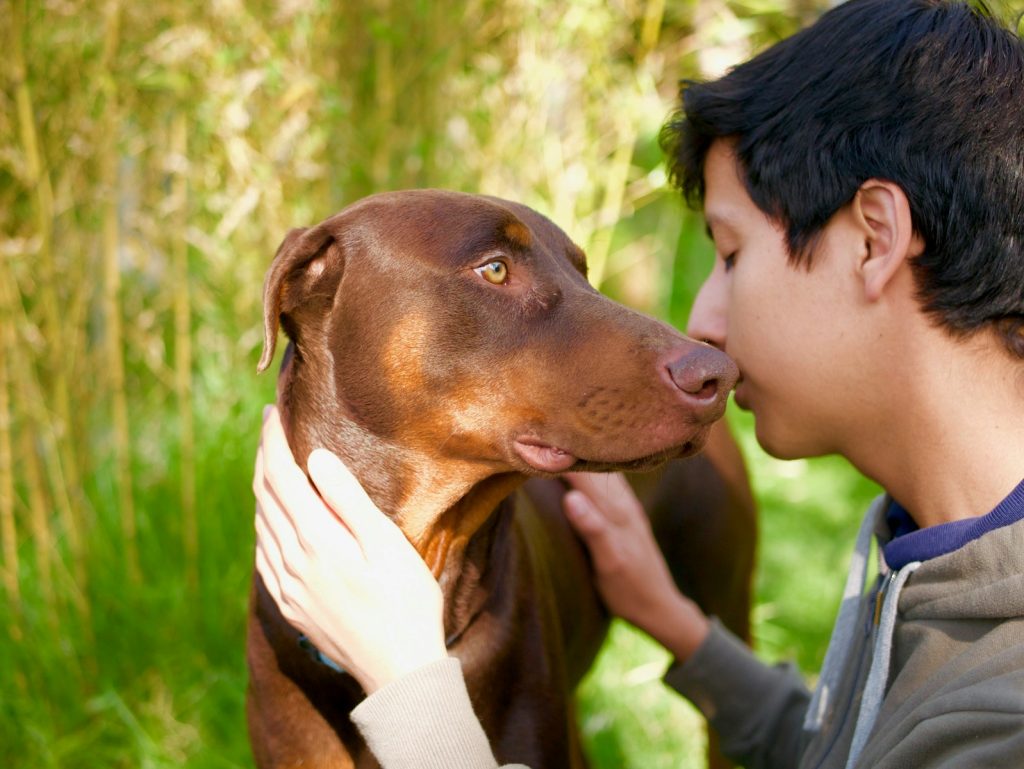The Signaling Behavior in Dogs: Understanding How They Use Gestures to Communicate

Unraveling Canine Communication
Dogs are often considered our best friends, but their method of communication may be even more complex than we realize. Through a subtle blend of body language, facial expressions, and vocalizations, dogs convey messages that are key to their social interactions. Understanding how they signal to each other and to us can tremendously enhance the bond we share with our furry companions.
Key Aspects of Dog Communication
Canine signaling behavior encompasses a wide range of gestures and signals, including:
- Posture: A dog’s stance can indicate feelings of confidence, fear, or submission. For instance, a dog that stands tall with a raised head and chest may project dominance or assertiveness, whereas a dog that crouches low with its tail tucked is likely displaying fear or submission.
- Tail Movement: The position and movement of a dog’s tail often reflect their emotional state. A wagging tail can indicate happiness or excitement, while a slow wag or a tail held low might suggest uncertainty or caution. Interestingly, dogs can also express annoyance or aggression with a stiffly held tail that doesn’t wag at all.
- Ear Position: Erect ears may show attentiveness, while pinned back ears can signal fear or anxiety. For example, a dog that listens intently with upright ears is focused and curious, while a dog with its ears back and head lowered might be feeling threatened or submissive in a situation.
- Facial Expressions: Subtle changes in expressions convey intentions and emotions. Dogs use their eyes, mouths, and even their wrinkled brows to communicate. A relaxed mouth suggests comfort, while a tight-lipped grin can be a submissive gesture, and a wide-eyed stare can indicate fear or excitement.
By observing these behaviors, owners can better understand their dog’s needs and emotions. Furthermore, the way dogs interact with each other forms a vital part of their signaling, offering insights into their social hierarchy and interactions within a pack. For example, when one dog raises a paw, it can invite another to play, while a low growl might signal warning or displeasure.
The Importance of Understanding Signals
Recognizing these signals not only enriches human-canine relationships but also contributes to better care and training practices. With keen observation, we can learn to respond appropriately to our dog’s cues, supporting their well-being. For instance, if you notice your dog’s tail lowered and ears back during a walk, it might be worthwhile to reassess their environment. Are there unfamiliar sights or sounds causing discomfort? Addressing these concerns can help mitigate stress for your dog.
Moreover, engaging in training sessions while paying attention to canine signals can lead to more effective communication. You might find that your dog learns commands more readily when they’re approached with patience and understanding, taking into consideration their body language. Overall, fostering this comprehension leads to a harmonious life with our canine companions, enriching the bonds forged through empathy and awareness.

DIVE DEEPER: Click here to discover the benefits of balanced nutrition for your pet
Decoding Canine Gestures
Understanding the signaling behavior of dogs is essential for any pet owner looking to enhance their relationship with their furry friend. Dogs have an incredible ability to read body language, not only from their canine counterparts but also from humans. By observing and interpreting these gestures effectively, we can bridge the communication gap and cultivate a more rewarding bond. The way dogs express themselves can vary significantly, depending on the situation, their individual temperament, and their socialization experiences.
Common Canine Gestures and Their Meanings
Dogs utilize a rich array of gestures to communicate, many of which can be observed in various contexts. Deciphering these signals can help us respond appropriately to our pets’ needs. Here are some common canine gestures and their meanings:
- Bowing: When a dog takes a playful stance with their front legs extended and rear end elevated, it often indicates an invitation to play. This gesture is a universal sign of friendliness and eagerness.
- Sniffing: Dogs use their sense of smell as a primary means of communication, gathering information about their environment and other dogs. When a dog sniffs the ground or another dog, they are analyzing pheromones and scents which carry important social information.
- Lip Licking: This gesture can indicate nervousness, anxiety, or submission. If a dog licks their lips frequently, especially during interactions with new people or animals, it is often a sign that they are feeling uncomfortable.
- Play Bowing: This is a variation of the bowing gesture, where dogs may also add a wagging tail or a playfully barking tone. This indicates that they are ready to engage in a fun activity, whether with humans or other dogs.
- Head Tilting: When dogs tilt their heads to one side, it often reflects their curiosity or confusion. This behavior usually occurs in response to certain sounds or commands, as they attempt to interpret what is being communicated.
Each of these gestures plays a pivotal role in a dog’s social interactions. For example, when two dogs meet, a combination of sniffing, tail wagging, and body posture helps each dog assess the other’s intentions. Additionally, dogs are masters at reading human emotions, often looking for specific cues in our expressions and body language. This ability highlights the importance of us being aware of our own non-verbal signals when interacting with our pets.
Observing Contextual Signals
Context significantly influences how dogs express their feelings and intentions. Dogs may behave differently in a familiar environment compared to an unfamiliar one. Understanding the significance of context means paying attention to not just what gestures are used, but also when and where they occur. For example, a dog that seems playful at home may become anxious in a crowded park, displaying different body language. Recognizing these shifts is crucial for mitigating stress and fostering a positive experience for your dog.
In understanding the nuances of canine communication, we can better respond to our dogs’ needs, enhancing their emotional well-being and strengthening the bond we share with them. This ongoing communication process is dynamic and rewarding, paving the way for a deeper connection between humans and dogs alike.
| Type of Gesture | Significance |
|---|---|
| Tail Wagging | Indicates excitement and social engagement. The speed and direction of wagging can convey different emotions. |
| Body Posture | Reflects confidence or submission. A dog standing tall may be assertive, while a lowered body can indicate fear or deference. |
| Vocalizations | Enhances communication beyond gestures. Barking, growling, or whining adds context to the dog’s intentions, such as alerting to danger or seeking attention. |
| Eye Contact | Indicates trust and affection. Prolonged eye contact can strengthen the bond between a dog and its owner, while averting gaze may suggest submission. |
Understanding these various signaling behaviors allows us to interpret our dogs’ actions and feelings more accurately. By recognizing and responding to these cues, dog owners can foster better communication and strengthen their relationships with their pets. Explore further into the complexities of canine communication to unlock a deeper understanding of what your dog is genuinely expressing!
DISCOVER MORE: Click here for effective training tips
Understanding Emotional Cues in Dogs
Beyond physical gestures, dogs also communicate their emotions through subtle changes in their facial expressions and overall demeanor. Recognizing these emotional cues is vital for responsible pet ownership, as it allows owners to intervene when their dogs are feeling threatened, anxious, or overwhelmed. By analyzing these cues, people can tailor their interactions to suit their dog’s emotional state, establishing a comfort level that fosters trust and security.
The Importance of Facial Expressions
Dogs possess a remarkable range of facial expressions that correlate with their feelings. Experts in canine behavior emphasize the significance of understanding these expressions in interpreting a dog’s emotional state. For instance, a dog displaying a relaxed face with softened eyes and a slightly open mouth is generally at ease. Conversely, a tight-lipped face, widened eyes, and raised eyebrows often indicate stress or fear.
Some dogs exhibit a “submissive grin,” where they pull their lips back and expose their teeth, which can signify their intention to de-escalate a situation rather than display aggression. In contrast, a dog that shows its teeth in a snarl is exhibiting a clear threat response. Understanding these facial cues helps dog owners recognize when their pets feel insecure or threatened, allowing them to take appropriate action to alleviate the tension.
Body Language Dynamics
Mu understanding the dynamic nature of a dog’s body language, pet owners can also interpret complex emotional situations that arise in social contexts. For example, during an introduction with another dog, if one dog raises its hackles while the other displays a relaxed posture with a wagging tail, the former may be exhibiting a dominant or aggressive stance, while the latter is communicating friendly intentions. Recognizing such disparities helps deter possible confrontations and promotes a smoother social experience.
Furthermore, the “whale eye” phenomenon occurs when a dog turns its head away and shows the whites of its eyes. This gesture often signifies fear or discomfort. Being aware of these more subtle movements enhances a dog’s quality of life by preemptively addressing situations that may cause distress.
Utilizing Vocalization Alongside Gestures
It’s not just body language and facial expressions that come into play when deciphering a dog’s communicative efforts. Vocalizations, such as barking, whining, or growling, can provide additional context to their gestures. For example, a high-pitched bark often signals excitement or a desire to engage, while low, deep growls may indicate warning or threat. It’s essential to consider vocal patterns in conjunction with physical cues, as they collectively offer a comprehensive picture of a dog’s emotional state and intentions.
For instance, if a dog raises its front paws while barking intensely, it might be communicating playfulness combined with excitement. Conversely, if the same dog growls while standing stiffly, it likely indicates that it feels threatened or defensive. This dual layer of communication enhances our understanding of canine interaction, illustrating that dogs are adept at conveying nuanced emotions.
By deepening our awareness of the signaling behavior in dogs and exploring aspects like emotional cues, vocalizations, and body dynamics, we create a framework for improved canine-human relationships. This knowledge empowers pet owners to react more appropriately in various social scenarios, ultimately leading to healthier interactions and enriched lives for both dogs and their human companions.
DIVE DEEPER: Click here to learn how socialization influences your pets’ behavior
Conclusion: Enhancing Our Connection with Canine Companions
As we explore the intricate world of signaling behavior in dogs, it becomes abundantly clear that their gestures, facial expressions, and vocalizations form a rich tapestry of communication that often goes unnoticed by the untrained eye. Understanding how dogs use these methods not only enhances our communication with them but also fosters a deeper bond built on trust and empathy. Pet owners who invest the time to learn these signals are better equipped to respond to their dog’s needs, whether it’s recognizing a friendly wagging tail or a hesitant posture indicating discomfort.
Moreover, by appreciating the nuances of canine communication, we can create safer environments for our furry friends. A vigilant owner who notices subtle cues can prevent misunderstandings during canine encounters or address anxiety in unfamiliar settings, paving the way for more positive interactions. The fusion of emotional and physical signaling undeniably enriches the canine experience, leading to healthier, happier lives for dogs and their humans alike.
The journey into understanding how dogs communicate is ongoing, and it holds vast potential for research in the realms of animal behavior and psychology. As we deepen our knowledge of dog gestures and emotional cues, we unveil insights that can significantly improve our relationships with these loyal companions. Thus, by remaining observant and responsive, we honor the dogs’ unique method of communication and nurture the irreplaceable bond that exists between species. Exploring and interpreting their signals not only helps us to understand their feelings but also enhances our role as informed and compassionate caretakers.



